If you know echidnas, you’ll agree that they are some of the world’s most unique animals. Their unusual characteristics and appearance have fascinated animal scientists for hundreds of years. Apart from their shy nature and being great swimmers, they can also detect electric fields.
An experiment in 1989 discovered that this creature differentiated between two water pools, one of which conducted a small amount of electricity, making them the only known animal to have the sense of electroreception.
However, this may not be the only fact unknown to you about these shy creatures. Check out some more incredible facts about echidnas!

1. Echidnas are Egg-Laying Mammals

Echidnas lay eggs like reptiles.
©Jukka Jantunen/Shutterstock.com
The first interesting fact on this list about these mammals, echidnas, is their ability to combine different characteristics, including laying eggs like reptiles. After the female echidna mates with a male, it lays a soft-shelled egg in her pouch. After ten days, the egg hatches into a baby echidna also called a puggle. The platypus is generally considered an ancestor of these monotreme egg-laying mammals.
2. Echidnas Have a Long Lifespan and a Low Body Temperature
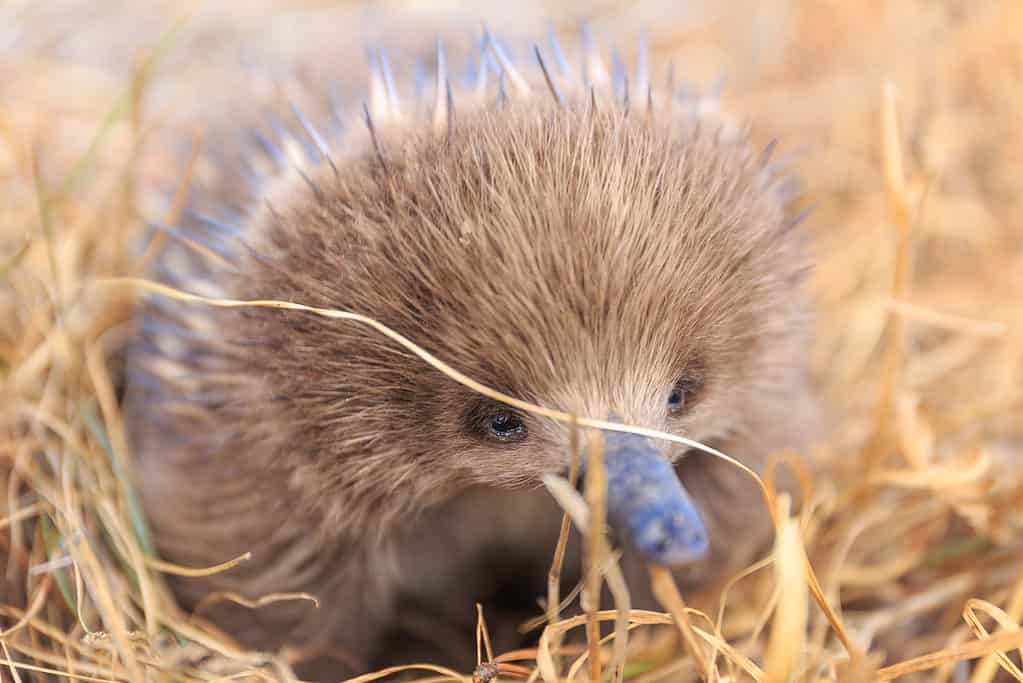
Echidnas’ body temperatures are not controlled like other mammals, as they can fluctuate.
©Ryan Hoi/Shutterstock.com
Another intriguing fact about echidnas is that they have one of the lowest body temperatures of animals and the lowest of any mammal. For instance, the modal body temperature test on two long-beaked echidnas in captivity using implanted data loggers for three and a half years was thirty-one degrees Celcius. Echidnas’ body temperatures are not controlled like other mammals, as they can fluctuate. Their slow metabolism and low body temperatures also contribute to their prolonged lifespan. Echidnas can live up to 50 years in captivity.
3. Male Echidnas Have a Weird Four-Headed Penis

Male echidnas have a strange four-headed penis.
©Wayne Butterworth/Shutterstock.com
If you’re searching for one unusual feature of this mammal, this could be it. Four-headed penis? That’s something you don’t see every day. Male echidnas have a strange four-headed penis, unlike most animals. You might wonder about the possibility of mating with a penis with four heads. Here’s how it works with echidnas: Two heads turn off during intercourse, while the other two expand to fit into the female’s two-branched reproductive tract. Between mating, males generally switch between the heads they use. Multiple male echidnas may try to fertilize the same female, resulting in sperm competition and one-sided ejaculation. Also, as a result of sperm competition, males’ sperm create bundles that swim faster than individual sperm cells.
4. Male Echidnas Compete to Mate by Forming a Train

The short-beaked Echidna forages through ant and termite nests.
©Greens and Blues/Shutterstock.com
The start of the mating season for echidnas is signaled by a unique procedure in which males form a train of up to a dozen individuals by lining up nose to tail behind a single female. Males abandon and rejoin trains for periods of up to a month. When a female is ready to mate, the males dig a trench in the ground around her. Males compete for mating duties by driving each other out of the trench. The last man standing has the opportunity to mate with the female.
Male echidnas can even mate with hibernating females. Males occasionally awaken early from hibernation and enter the burrows of females still hibernating. Female echidnas may awaken from hibernation to discover they are pregnant.
5. Echidnas Have no Nipples
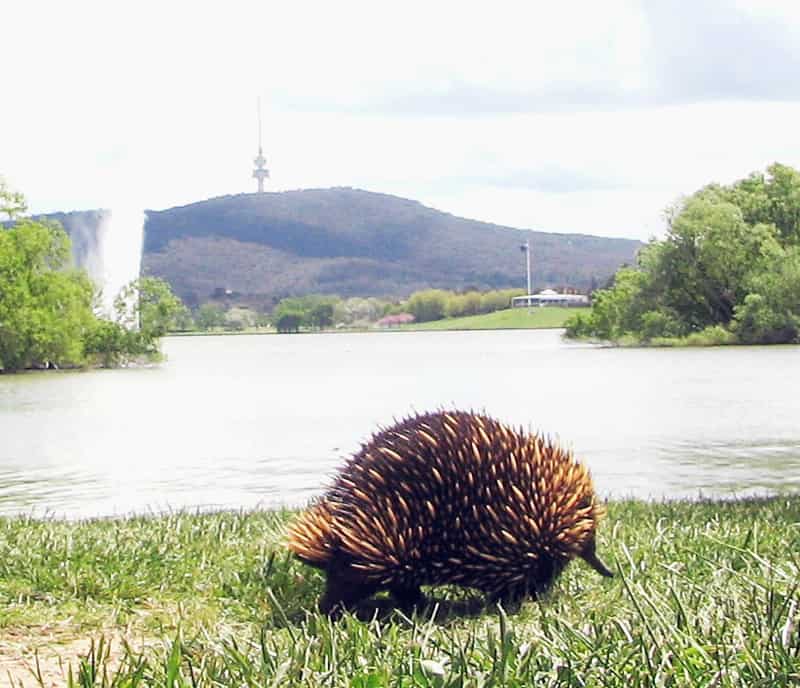
Female echidnas don’t have nipples; they have milk patches in their pouches that let out milk.
©en:User:Skyring / CC BY-SA 3.0 – License
Now, this is a bit odd. Most mammals have nipples (with which most feed their young), including the opossum. Nevertheless, echidnas are a type of mammal that lacks nipples. Echidnas, like other animals, feed their young milk but don’t have nipples. Female echidnas don’t have nipples, so they have milk patches in their pouches that let out milk, which the puggle eats.
6. Echidnas are Toothless

Echidnas fall into the extremely rare category of monotremes – they are quite different from any other mammal as they lay eggs and have no teats.
©Jarrod Calati / via Getty Images
Another weird fact about these unique creatures is that they lack teeth (but their tongues are quite compensating). Echidnas have tiny lips and toothless jaws at the end of their slender snouts. They eat ants, termites, worms, and insect larvae using their long, sticky tongues. Their tongues are quite fast and sticky, darting in and out to slurp insects. This is why the short-beaked echidna earned its scientific name, Tachyglossus, which translates to “the quick tongue.” Because they don’t have teeth, echidnas utilize hard pads on their mouth’s roof and tongue’s back to break down their food.
7. Echidnas Have Two Genera
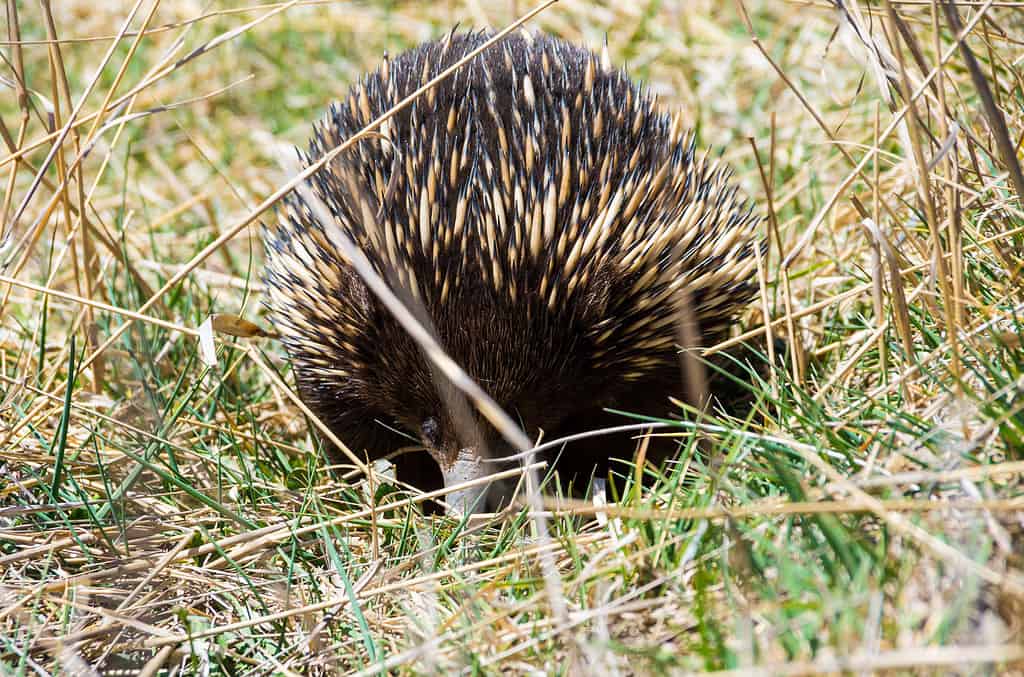
©iStock.com/Adam Jeffers
Echidnas are classified into two genera: the long-beaked echidna (member of the genus Zaglossus), primarily found in New Guinea, and the short-beaked echidna (member of the genus Tachyglossus).
8. Echidnas are Named After the “Mother of Monsters”
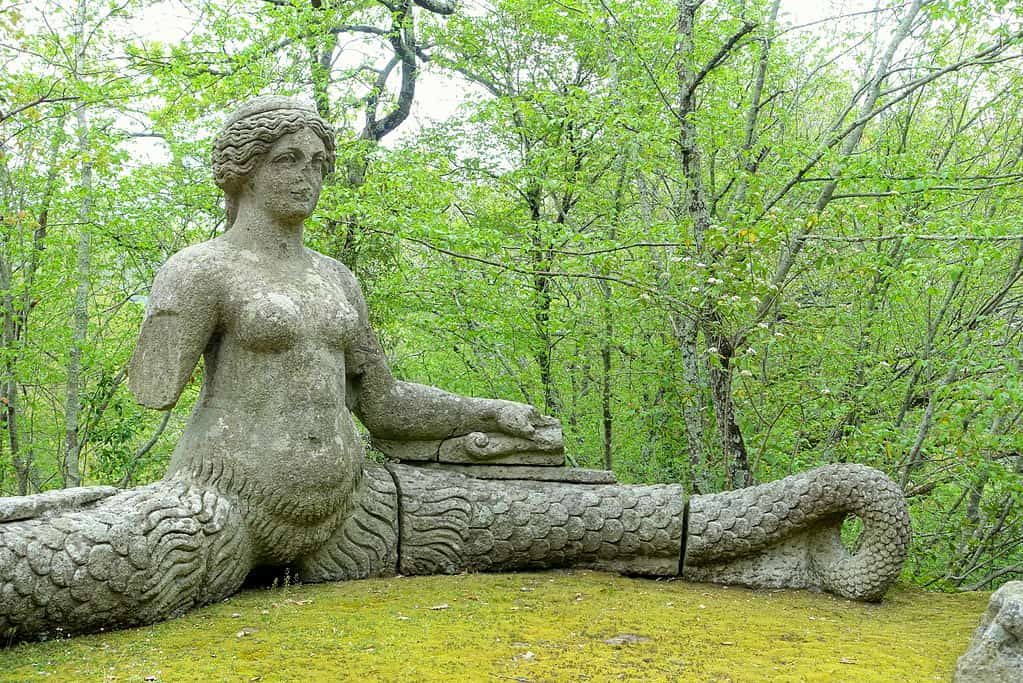
©Daderot, Public domain – License
One may not be surprised to hear that people named these weird-looking but unique creatures after a famous mythological monster from Greek mythology. This incredible monster, called the Mother of Monsters, has some unnatural characteristics, including being half-human and half-serpent. This will undoubtedly ring a bell for those who have seen movies or are familiar with Greece and its mystical beings and mythologies. Even scientists initially assumed that this species possessed both mammalian and reptilian characteristics, much like their namesake, the Mother of Monsters.
9. Echidnas Keep Their Young in Burrows
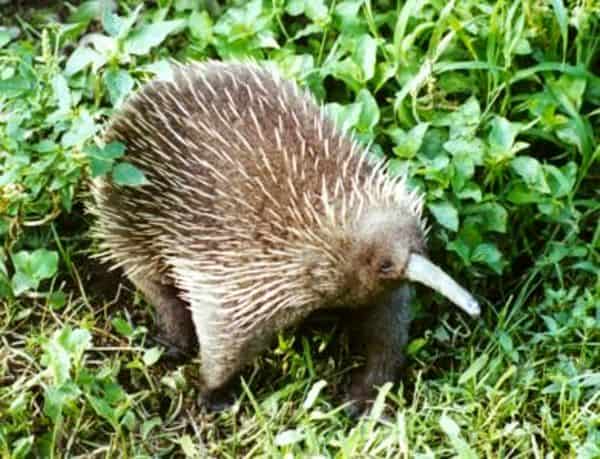
Echidnas are overly protective of their young.
©User: Jaganath, CC BY-SA 3.0, via Wikimedia Commons – License
One interesting fact about echidnas is that they are overly protective of their young. Young echidnas spend much of their time in safe subterranean burrows for the first five months of their lives after hatching. While they hide in the burrows, their mother seeks food and returns every 3 to 6 days to feed her young. This conceals and secures them from predators. Return visits for mothers gradually become less frequent as the young echidna grows older and starts consuming insects instead of milk. When the puggle is old enough, the mother no longer visits the nursery burrow, and the puggle is free to live independently.
10. Echidnas Forage Using Their Tongue

Short-beaked echidnas use their lengthy snouts to break apart wood and termite mounds when searching for food.
©Gunjan Pandey, CC BY-SA 4.0 – License
Having mentioned that echidnas have no teeth, their tongue becomes a valuable instrument for feeding. Echidnas search for food with their long, sticky tongues, which they use to reach into burrows and tunnels in search of termites, ants, and other insects. Short-beaked echidnas, for example, use their lengthy snouts to break apart wood and termite mounds when searching for food.
The photo featured at the top of this post is © Wayne Butterworth/Shutterstock.com
Thank you for reading! Have some feedback for us? Contact the AZ Animals editorial team.






